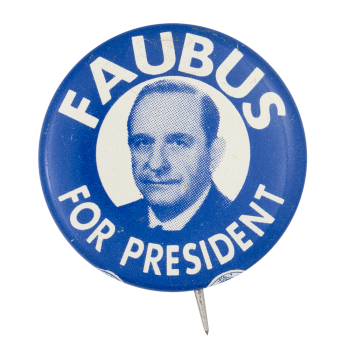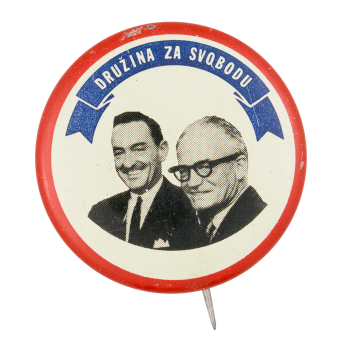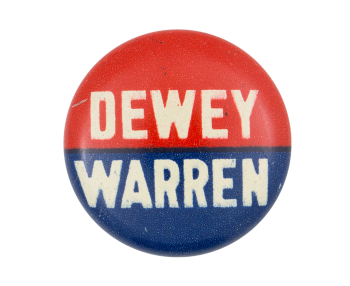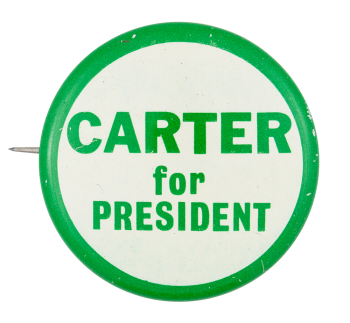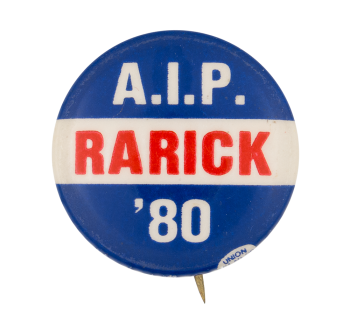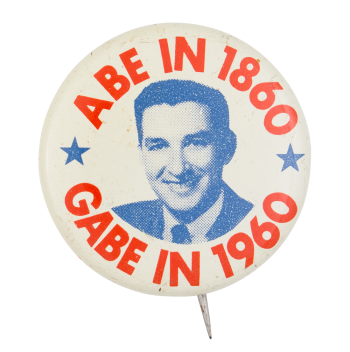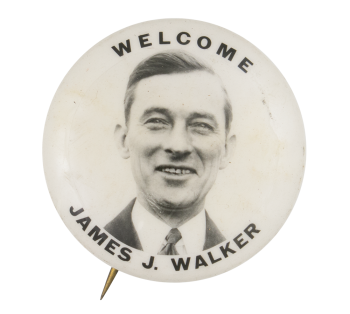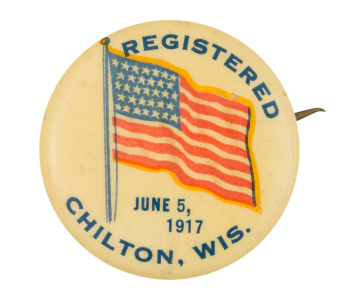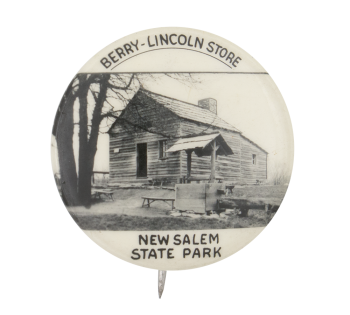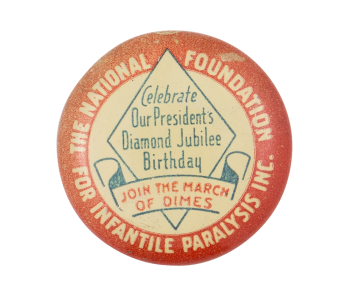Faubus for President
| Category | |
|---|---|
| Additional Images | |
| Sub Categories | |
| Text on Button | FAUBUS FOR PRESIDENT |
| Image Description | Black and white photograph of a man's head and shoulders on a white background with a blue outer edge with white text on it |
| Back Style | |
| The Shape | |
| The Size | |
| Additional Information | In 1960, the National States Rights Party nominated Orval Eugene Faubus for President and retired Navy Admiral John Crommelin of Alabama for Vice-President at a secret meeting. Faubus did not actively campaign and only received 0.07% of the votes, losing to the John F. Kennedy/Lyndon B. Johnson ticket. Orval Faubus was a member of the United States Democratic Party who in 1936 ran for, but lost, a seat in the Arkansas House of Representatives at the age of 26. He was elected as the circuit clerk and recorder for Madison County before joining the United States Army and serving as an intelligence officer in World War II. After returning from the war, Faubus was elected as the Governor of Arkansas in 1954. His name became internationally known when he used the Arkansas National Guard to prevent African-American students from attending Little Rock Central High School in 1957, as part of federally-ordered racial desegregation. President Dwight Eisenhower federalized the Arkansas National Guard and ordered them back to their armories, removing them from Faubus' control. Some believe that Faubus' decision was politically motivated to shield him from fallout that had come with the passage of a tax intended to increase teacher salaries. Faubus decided not to seek reelection as Governor in 1966, but returned to vie for the Democratic nomination for Governor in 1970 and 1974, losing each time. His final race was in 1986 against Bill Clinton, who defeated Faubus and went on to become Governor of Arkansas, and later, President of the United States. Faubus passed away in 1994. |
| Catalog ID | PO0579 |

